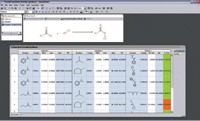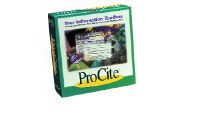Advertisement
Grab your lab coat. Let's get started
Welcome!
Welcome!
Create an account below to get 6 C&EN articles per month, receive newsletters and more - all free.
It seems this is your first time logging in online. Please enter the following information to continue.
As an ACS member you automatically get access to this site. All we need is few more details to create your reading experience.
Not you? Sign in with a different account.
Not you? Sign in with a different account.
ERROR 1
ERROR 1
ERROR 2
ERROR 2
ERROR 2
ERROR 2
ERROR 2
Password and Confirm password must match.
If you have an ACS member number, please enter it here so we can link this account to your membership. (optional)
ERROR 2
ACS values your privacy. By submitting your information, you are gaining access to C&EN and subscribing to our weekly newsletter. We use the information you provide to make your reading experience better, and we will never sell your data to third party members.
Physical Chemistry
Digital Briefs
New Software and Websites for the Chemical Enterprise
by Stephen M. Trzaska
October 23, 2006
| A version of this story appeared in
Volume 84, Issue 43
The following are some of the products that were on display at the exposition during the American Chemical Society's national meeting in San Francisco in September.
For Teachers & Students

OWL (Online Web-based Learning system) was developed at the University of Massachusetts, Amherst, and is a customizable, cross-platform system available for liberal arts chemistry, intro chemistry, general chemistry, and organic chemistry. OWL provides students with instant analysis and feedback on homework problems, modeling questions, and animations. It also provides a framework for an online, virtual-learning environment with interactive learning materials. Instructors can create courses and sections, create questions and homework exercises, check grades and monitor student progress, and manage grades for a course. Thomson Learning, owl.thomsonlearning.com
WebAssign is an online homework system that allows for the distribution, collection, grading, and recording of assignments quickly, accurately, and automatically over the Internet. The system features homework, quizzes, and tests; a personalized calendar; and multiple communication platforms, such as forums, announcements, and a help desk. WebAssign also offers the opportunity to gauge which concepts students do not understand by providing, for example, percentage of questions that were answered correctly. The system currently supports 75 chemistry textbooks. WebAssign, webassign.net;
MOE 2006.08 is a fully integrated, drug discovery software package with tools for protein modeling and bioinformatics, pharmacophore modeling, cheminformatics, high-throughput discovery, structure-based design, molecular modeling, and simulations and method development. Benefits of this new software version include 2-D active-site depictions, high-quality transparency and back face culling, RECAP analysis and synthesis, and electrostatic maps, among other features. The software comes with an auxiliary DVD containing 3-D conformations in MOE molecular database format for nearly 650,000 leadlike chemical structures. Chemical Computing Group, www.chemcomp.com
(1) Symyx Notebook is an electronic laboratory notebook (ELN) designed to enable researchers to plan, execute, and record experiments. Users can design experiments and data templates with flexible data entry tools, record all types of experiments through integration with existing desktop software, and rapidly find experimental data via a searchable global data repository. The software offers a single platform that facilitates data sharing, as well as electronic data storage, stoichiometry and procedure entry, experimental scaling, chemical and data tools, and data editing. The platform is scalable to thousands of users. Symyx, www.symyx.com
Un-Scan-It 6.0 is a graph- digitizing software program that automatically extracts values from hard-copy graphs. In addition to the many digitizing features, the program integrates peak areas, smooths data, takes derivatives, rescales graphs, and exports ASCII data for use in spreadsheet, data analysis, and graphics programs. Un-Scan-It features up to 25,000 data points per file; 10 different digitizing resolutions; selectable data spacing; multiline, cyclic, dashed/dotted line, and contour-line digitizing; point-and-click insertion and editing of data; interactive cursors that allow data editing, peak location, and peak area integration; and correction for tilted graphs and variable line thickness. The software runs on Windows and Macintosh operating systems. Silk Scientific, www.silkscien tific.com
(2) Spartan '06 Windows contains a library of theoretical models from molecular mechanics and quantum chemistry. The graphical user interface allows scientists to build and manipulate molecules; run molecular mechanics and quantum chemical calculations; and analyze results with Spartan graphics, property boxes, spreadsheets, spectra, plots, and text output. The software provides properties such as energies, geometries, and frequencies. New features include enhanced NMR chemical shift calculations and heats of formation, access to Web-based spectra libraries, access to ChemDraw, and many computational enhancements. Wavefunction, www.wavefun.com
Benchware Notebook is an electronic laboratory informatics software system designed to help scientists share data with colleagues and to improve team collaboration. For the lab scientist, the notebook offers full tracking of page history and revisions. Reactions are imported, reagent amounts are entered, and yields are automatically calculated. The software is also useful for research management and patent professionals by offering a database of research activities. Tripos, www.tripos.com
(3) KnowItAll Informatics System, Metabolomics Edition, is an end-to-end metabolomics research platform, providing spectral analysis and chemometrics tools in addition to links to metabolic pathways for metabolite/biomarker identification. This system is compatible with multiple instrument formats and includes spectroscopic, cheminformatics, and chemometric tools. With the Data Toolbox, researchers can build, search, and mine user-generated or reference databases containing analytical (including spectra and chromatograms), chemical, and property information. Bio-Rad Laboratories, www.knowitall.com
Molecule Evoluator is a software package that aids in the development of novel molecular templates and lead compounds. It combines evolutionary algorithms and the interaction with the drug design expert for creating and optimizing structures. Through an iterative process of molecule creation, selection, modification, and refinement, the user can generate a library of promising candidate molecules. In addition, the program can automatically calculate some of the molecules' physicochemical properties, such as polar surface area, molecular weight, number of hydrogen donors and acceptors, stereocenters, and number of aromatic systems. Also embedded are optioal automatic filters used for generating molecules with specific properties within a predefined range or according to certain chemical rules and restrictions. Cidrux, www.cidrux.com
(4) LigandScout 1.02 is a software tool that allows users to derive 3-D pharmacophores from structural data of macromolecule/ligand complexes in an automated and convenient way. It creates 3-D pharmacophores from structure-based complex data and allows sophisticated pharmacophore analysis and fine-tuning to create selective pharmacophoric screening filters for a specific target. Support for various common pharmacophore formats affords maximum interoperability to screening platforms. The full-featured 3-D graphical user interface with multiple undo levels makes the exploration of the active site and pharmacophore creation within the complex efficient and transparent. LigandScout incorporates binding-site analysis, pharmacophore-based alignment, and the creation of shared feature pharmacophores and runs on all common operating systems. Inte:Ligand, www.inteligand.com
SiteMap combines a novel algorithm for binding-site identification with property visualization tools to provide researchers with an efficient means of finding and exploiting the characteristics of ligand binding sites for drug design. Beyond lead discovery, SiteMap assists in lead optimization by affording insight into ligand-receptor interactions so as to suggest effective strategies to modify lead compounds to enhance receptor complementarity. The software features rapid site identification and ranking through specifications set by the user to identify pharmaceutically relevant targets; site visualization tools, whereby different regions within the binding site subregions are highlighted; and active-site maps, where modifications to a ligand structure would be expected to promote binding. Schrödinger, www.schrodinger.com
(5) PowerChrom 280 System is used for the collection, display, and analysis of chromatographic data and consists of software and a hardware unit. Meant for replacing paper recorders, integrators, and DOS-based systems, PowerChrom 280 features plug-and-play setup, 24-bit resolution, manual or automatic peak editing, digital signal processing, easy exporting to other software programs, and calibration response functions. The system is fitted with an internal PC with Windows XP Professional and PowerChrom software pre-installed on its hard drive. The system runs on Windows and Macintosh operating systems. eDAQ, www.edaq.com
Barista is a visualization platform containing analysis functions for molecular structures, molecular orbitals, multiple conformations, and standard vibrational frequency spectra. Visualization functions create, display, and manipulate 3-D depictions of molecular structures based on results computed by molecular computation programs. Barista's display options include synchronized camera views to provide deeper understanding of a molecule's structure, and bond information, such as angle, torsion, and length, is easily displayed by clicking on a molecule. Conflex, www.conflex.us
Vitic is a chemically intelligent toxicity database and management system that can recognize and search for similarities in chemical structures. It offers a structure- and substructure- searchable means of finding toxicology data and is continually updated. Users can access toxicological data, as well as public and proprietary data including chemical structure, supporting information, details of experimental protocol, and literature references. In addition, Vitic offers management tools that enable data to be stored in-house in a secure database, as well as access to previously unpublished toxicology data. Lhasa Ltd., www.lhasalimited.org
Stephen M. Trzaska writes Digital Briefs. Information about new or revised electronic products can be sent to d-briefs@acs.org.









Join the conversation
Contact the reporter
Submit a Letter to the Editor for publication
Engage with us on Twitter